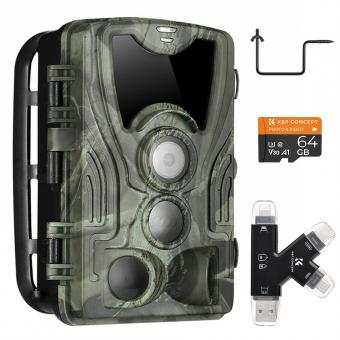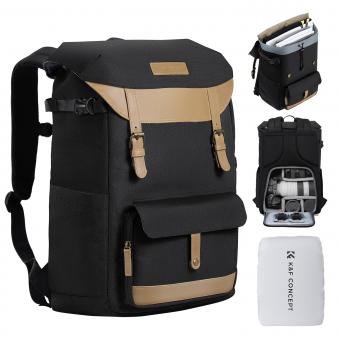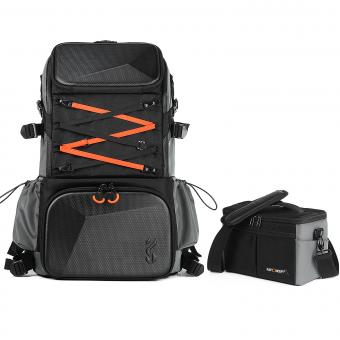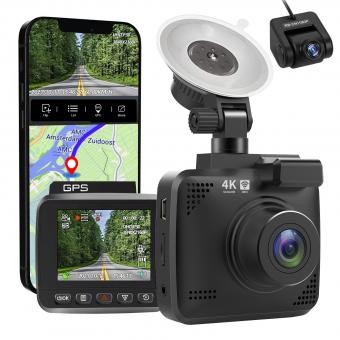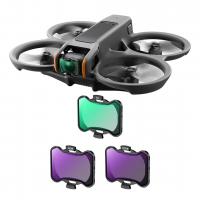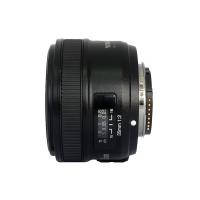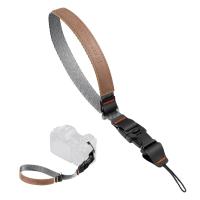How To Access Wifi Camera From Internet ?
To access a Wi-Fi camera from the internet, you need to follow a few steps. First, ensure that the camera is connected to your Wi-Fi network. Then, find the IP address of the camera by checking the camera's settings or using a network scanning tool. Next, configure your router to allow access to the camera by setting up port forwarding or enabling Universal Plug and Play (UPnP). Once the router is configured, you can access the camera remotely by entering its IP address in a web browser or using the camera's dedicated mobile app. Make sure to set up proper security measures, such as strong passwords and enabling encryption, to protect your camera from unauthorized access.
1、 Configuring Port Forwarding on Your Router for Remote Access
To access a WiFi camera from the internet, one of the most common methods is by configuring port forwarding on your router for remote access. Port forwarding allows you to redirect incoming internet traffic to a specific device on your local network, in this case, your WiFi camera.
Here's a step-by-step guide on how to configure port forwarding on your router:
1. Determine the IP address of your WiFi camera: You can usually find this information in the camera's settings or documentation.
2. Access your router's settings: Open a web browser and enter your router's IP address. This is typically something like 192.168.0.1 or 192.168.1.1. Enter your router's username and password to log in.
3. Find the port forwarding settings: The location of these settings may vary depending on your router's make and model. Look for options like "Port Forwarding," "Virtual Servers," or "Applications & Gaming."
4. Add a new port forwarding rule: Create a new rule by specifying the IP address of your WiFi camera and the port number(s) it uses for communication. Typically, the camera's documentation will provide the necessary port information.
5. Save and apply the changes: Once you've entered the required information, save the settings and apply the changes. Your router will now forward incoming traffic on the specified port(s) to your WiFi camera.
It's important to note that port forwarding can expose your camera to potential security risks. To mitigate these risks, ensure that your camera's firmware is up to date, use strong passwords, and consider enabling additional security features such as two-factor authentication.
Additionally, some newer WiFi cameras and routers offer alternative methods for remote access, such as cloud-based services or mobile apps. These options may provide a more user-friendly and secure way to access your camera from the internet.

2、 Setting Up Dynamic DNS for Remote Access to WiFi Camera
Setting up dynamic DNS for remote access to a WiFi camera is a crucial step in accessing your camera from the internet. Dynamic DNS allows you to assign a domain name to your camera's IP address, making it easier to connect to your camera remotely.
To set up dynamic DNS, follow these steps:
1. Choose a dynamic DNS service provider: There are several dynamic DNS service providers available, such as No-IP, DynDNS, and DuckDNS. Research and select a provider that suits your needs.
2. Create an account: Sign up for an account with your chosen dynamic DNS service provider. This will typically involve providing your email address and creating a password.
3. Configure your camera: Access your camera's settings through its web interface or mobile app. Look for the network settings or advanced settings section and find the dynamic DNS option. Enter the domain name provided by your dynamic DNS service provider and save the settings.
4. Set up port forwarding: To access your camera from the internet, you need to configure port forwarding on your router. Access your router's settings by typing its IP address into a web browser. Locate the port forwarding or virtual server section and create a new rule. Enter the camera's IP address and the port number used by the camera. Save the settings.
5. Test the connection: Once the setup is complete, you can test the connection by accessing the camera's domain name from a device connected to the internet. If successful, you should be able to view the camera's live feed remotely.
It's important to note that the process may vary slightly depending on your camera's brand and model. Always refer to the camera's user manual or manufacturer's website for specific instructions.
In recent years, advancements in technology have made accessing WiFi cameras from the internet even more convenient. Many cameras now offer mobile apps that simplify the setup process and provide a user-friendly interface for remote viewing. Additionally, some cameras support cloud storage, allowing you to access recorded footage from anywhere with an internet connection.
As technology continues to evolve, it's essential to stay updated on the latest security measures and best practices for accessing WiFi cameras remotely. Regularly check for firmware updates for your camera and router to ensure you have the latest security patches. Additionally, consider enabling two-factor authentication for added security when accessing your camera remotely.

3、 Enabling Remote Access via Mobile Apps or Web Browsers
Enabling remote access to a WiFi camera from the internet has become increasingly popular and convenient. There are several methods to achieve this, but one of the most common and user-friendly ways is through mobile apps or web browsers.
To access a WiFi camera from the internet, you can start by installing the manufacturer's mobile app on your smartphone or tablet. These apps are usually available for both iOS and Android devices. Once installed, you can connect the camera to your home WiFi network and register it with the app. This allows you to remotely access the camera's live feed, view recorded footage, and adjust settings from anywhere with an internet connection.
Alternatively, you can also access the camera through a web browser on your computer or laptop. Most WiFi cameras come with a built-in web interface that allows you to access and control the camera's functions. To do this, you need to know the camera's IP address and enter it into the web browser's address bar. From there, you can log in with your camera's credentials and access the live feed or recorded footage.
It's important to note that when accessing a WiFi camera from the internet, you should prioritize security. Make sure to change the default login credentials, use strong passwords, and keep the camera's firmware up to date. Additionally, consider enabling encryption and using a virtual private network (VPN) for added security.
In conclusion, enabling remote access to a WiFi camera from the internet can be achieved through mobile apps or web browsers. These methods provide convenience and flexibility, allowing you to monitor your camera's feed and settings from anywhere with an internet connection. However, always prioritize security measures to protect your camera and personal data.

4、 Securing Remote Access to WiFi Camera with Strong Passwords
Securing Remote Access to WiFi Camera with Strong Passwords
To access a WiFi camera from the internet, it is crucial to prioritize security to protect your privacy and prevent unauthorized access. One of the most effective ways to achieve this is by using strong passwords. Here's how you can secure remote access to your WiFi camera with strong passwords:
1. Change the default password: Many WiFi cameras come with default passwords that are widely known and easily accessible. The first step is to change this default password to a unique and strong one. Avoid using common passwords or personal information that can be easily guessed.
2. Use a combination of characters: Create a password that includes a combination of uppercase and lowercase letters, numbers, and special characters. This makes it more difficult for hackers to crack the password using brute force or dictionary attacks.
3. Make it long: The longer the password, the more secure it is. Aim for a minimum of 12 characters, but the longer, the better. Consider using passphrases instead of single words, as they are easier to remember and harder to crack.
4. Avoid using personal information: Do not use easily guessable information such as your name, birthdate, or address in your password. Hackers can easily find this information and use it to gain unauthorized access.
5. Enable two-factor authentication (2FA): Two-factor authentication adds an extra layer of security by requiring a second form of verification, such as a code sent to your mobile device, in addition to your password. This ensures that even if your password is compromised, unauthorized access is still prevented.
6. Regularly update your password: Change your password periodically to minimize the risk of it being compromised. Aim to update it at least every three to six months.
It is important to stay updated with the latest security practices and recommendations. Keep an eye on any new vulnerabilities or security patches related to your specific WiFi camera model and follow the manufacturer's guidelines for securing remote access.


